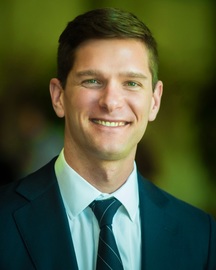 Brad Rathgeber, Executive Director Brad Rathgeber, Executive Director Late Friday night, I got home from my second trip to the West Coast in three weeks. The first trip was for the NAIS Annual Conference and the second was to see some of the great OSG school in Los Angeles. Both trips confirmed for me something that I have been feeling in my travels throughout the year: change is really (and finally) happening across the board within independent schools. Perhaps paradoxically, it seems to me that this change has been sped up in the last year by a number of schools who have come to realize that there is no “silver bullet” out there to better our schools: the iPad, online learning, a one-to-one computing program, the SmartBoard, etc. alone will not make our schools and the learning happening within better. Instead, schools are working toward harder solutions: changing faculty culture, engaging everyone in the learning process, moving to a “growth mindset,” valuing innovation, and having the hard conversations. This is true for the most successful schools leading the way in online learning, too. Leading schools understand that simply expanding course catalogs through online learning does not necessarily help to better the academic program of a school. However, if the school works with online learning programs that 1) are mission-alligned, 2) agree on general learning philosophies, 3) help fill in gaps of an existing program, 4) expand opportunities for students, and 5) work with the school as a partner not a client, then online learning can be a very valuable addition to the school. On a macro independent school level, I have seen these ideas embraced like never before at the NAIS Annual Conference. The Whitepaper that I recently co-wrote with my friend Michael Nachbar, the Director of the Global Online Academy, was exceptionally well received by people at the conference and in the weeks since. There was a general buzz in the halls of the Seattle Convention Center about online learning, and the thoughtful, mission-alligned approach of the schools in the OSG and GOA consortiums. I also thought that it was particularly telling that after the keynote address at the start of the conference from Bill Gates, the criticism from the audience (especially on Twitter) was not that he had “pushed the envelope” too far in his address on the powers of technology to help transform education, but instead there was a fairly large cry of criticism from people who believed that he had not gone far enough. That was a sea-change for an NAIS Annual Conference. This week in Los Angeles, I felt the change at the individual school level. I had the chance to speak with two faculty groups this week that I had presented to last March. Last year, when I spoke to these faculties, there was general skepticism about the Online School for Girls program and online learning, in general. Faculty were concerned about the quality of education and, quite frankly, that their jobs were being replaced. This year, faculty were excited by the opportunities that engaging in online learning offered both for them (through professional development and the ability to teach online themselves) and for their students. A year into having students take online courses, the faculty had heard what the student experience was: small classes, caring teachers, personalized attention, project-driven, and, yes, challenging. By this point, they had come to know that the Online School for Girls was created to be like them, and was really birthed from their collective efforts and those of great girls’ school educators of years past, too. Instead of viewing OSG with skeptical eyes as the “other,” most were viewing OSG as part of them. We are at an exciting time in independent school education. Our community is working together on big issues in ways that we never have before. And, we are tackling the hard questions – and that is making all the difference.
0 Comments
|
Don't miss our weekly blog posts by joining our newsletter mailing list below:AuthorsBrad Rathgeber (he/him/his) Archives
July 2024
Categories |

 RSS Feed
RSS Feed